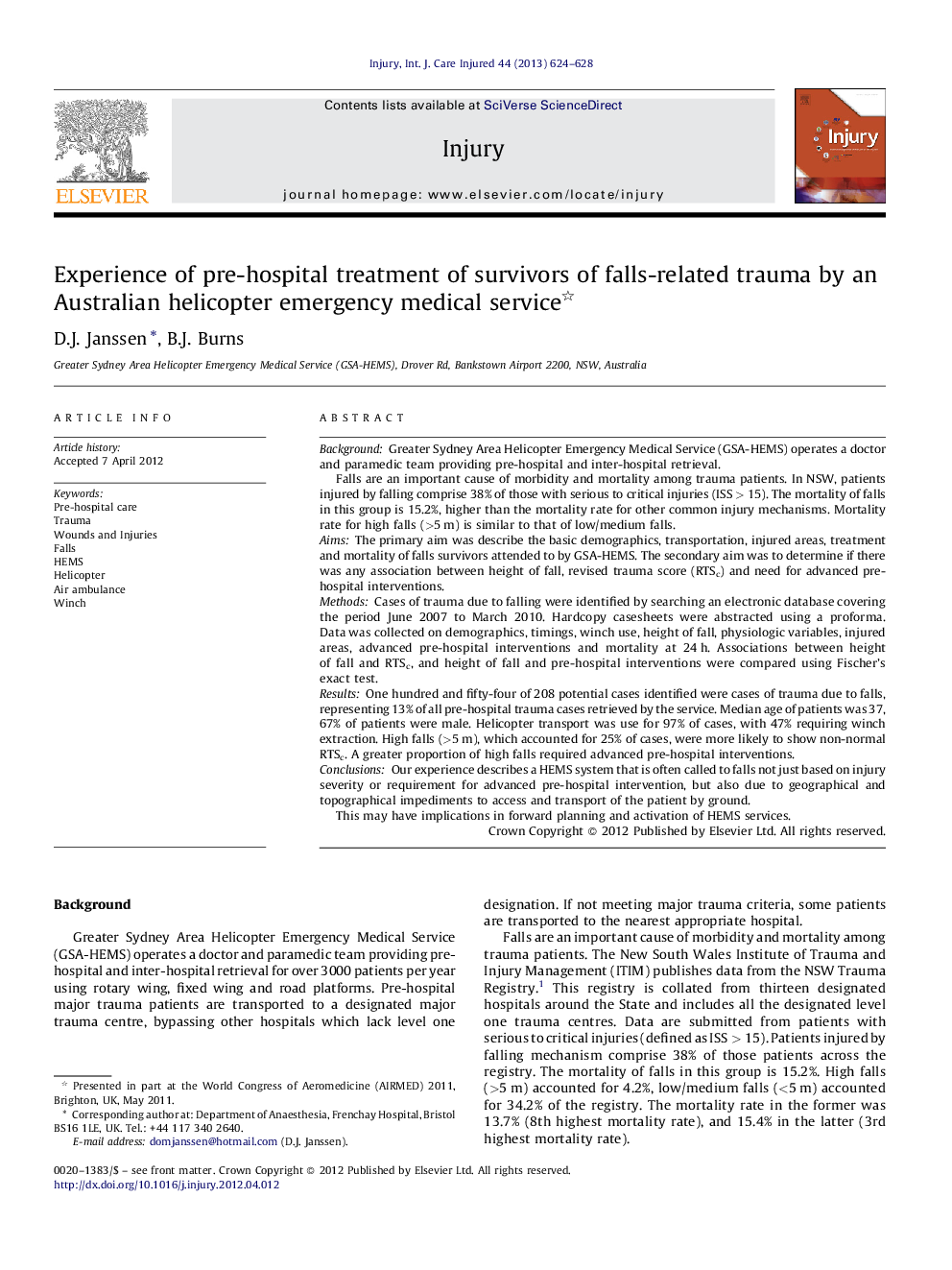| Article ID | Journal | Published Year | Pages | File Type |
|---|---|---|---|---|
| 6083933 | Injury | 2013 | 5 Pages |
BackgroundGreater Sydney Area Helicopter Emergency Medical Service (GSA-HEMS) operates a doctor and paramedic team providing pre-hospital and inter-hospital retrieval.Falls are an important cause of morbidity and mortality among trauma patients. In NSW, patients injured by falling comprise 38% of those with serious to critical injuries (ISSÂ >Â 15). The mortality of falls in this group is 15.2%, higher than the mortality rate for other common injury mechanisms. Mortality rate for high falls (>5Â m) is similar to that of low/medium falls.AimsThe primary aim was describe the basic demographics, transportation, injured areas, treatment and mortality of falls survivors attended to by GSA-HEMS. The secondary aim was to determine if there was any association between height of fall, revised trauma score (RTSc) and need for advanced pre-hospital interventions.MethodsCases of trauma due to falling were identified by searching an electronic database covering the period June 2007 to March 2010. Hardcopy casesheets were abstracted using a proforma. Data was collected on demographics, timings, winch use, height of fall, physiologic variables, injured areas, advanced pre-hospital interventions and mortality at 24Â h. Associations between height of fall and RTSc, and height of fall and pre-hospital interventions were compared using Fischer's exact test.ResultsOne hundred and fifty-four of 208 potential cases identified were cases of trauma due to falls, representing 13% of all pre-hospital trauma cases retrieved by the service. Median age of patients was 37, 67% of patients were male. Helicopter transport was use for 97% of cases, with 47% requiring winch extraction. High falls (>5Â m), which accounted for 25% of cases, were more likely to show non-normal RTSc. A greater proportion of high falls required advanced pre-hospital interventions.ConclusionsOur experience describes a HEMS system that is often called to falls not just based on injury severity or requirement for advanced pre-hospital intervention, but also due to geographical and topographical impediments to access and transport of the patient by ground.This may have implications in forward planning and activation of HEMS services.
